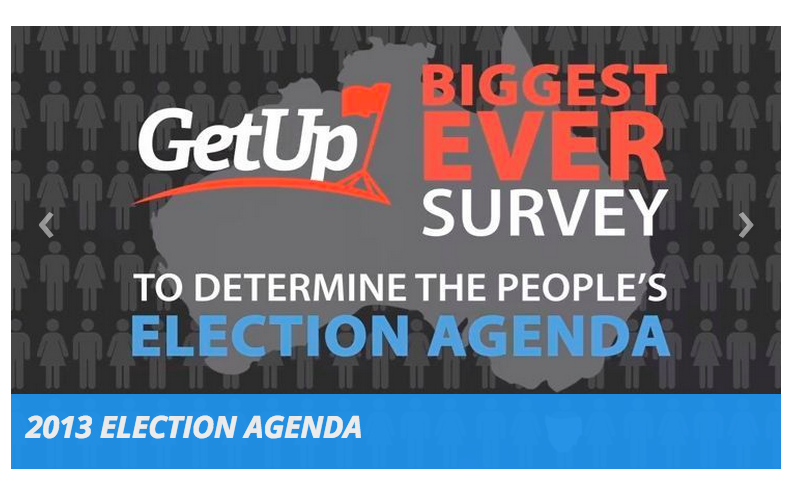When it comes to 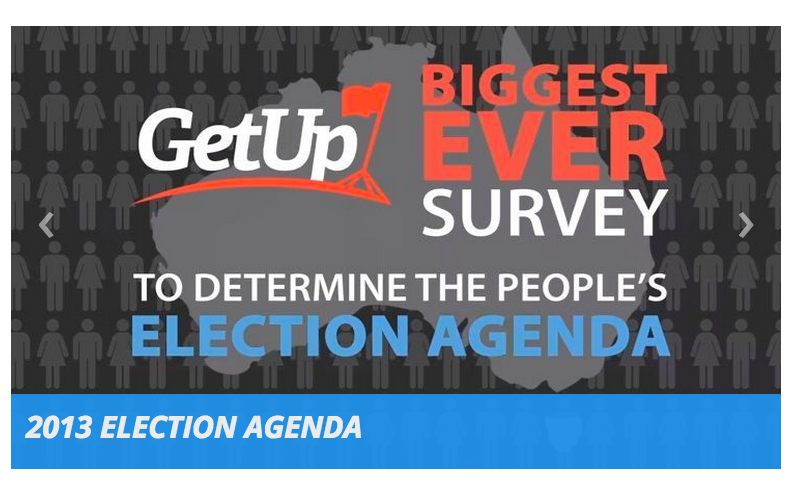 elections, campaigners in the UK get very excited about the one happening ‘across the pond’ in the US.
elections, campaigners in the UK get very excited about the one happening ‘across the pond’ in the US.
I’m one of them, and even 6 months later give me an article on data driven campaigning that helped Obama to win and I’ll be the first to read it.
But is it time for us to stop looking west for campaign inspiration and instead start looking ‘down under’?
The Australian elections might not have the glamour of the US but in many ways the comparisons between our political systems are closer, two main parties but plenty of feisty smaller ones, a constituency system with the leader of the biggest party in Parliament forming a government and an active campaigning sector.
While there are clear differences, most notably in Australia voting is compulsory, any smart campaigner could do worse than follow the soap opera down under for the next 4 weeks ahead of the polls on 7th September to get some clues about how we might plan to influence the 2015 election here in the UK.
Here are 3 things that have already caught my eye in recent days;
GetUp! Live Webcast – The Australian equivalent of 38 Degrees are, as expected, making a big deal of the elections. I’m sure we’ll see lots of new ideas from them in the coming weeks, but I love how they’re starting by hosting a nightly weekly live webcast for their supporters to bring them the latest on what they’re doing and how the community can get involved (you can watch at 9.30am here in the UK).
Learning from failure – The Centre for Australian Progress is playing a key role in coordinating groups and organising war rooms to help bring campaigners together. They’ve already planned to organise a FailShare to bring together groups that have been involved in campaigning around the election to learn from what didn’t work. The appetite to learn from what didn’t work as well as what did is brilliant.
Engaging the grassroots – I’m biased on this, because I’ve been working with groups like Micah Challenge Australia for a number of year, but as well as the exciting and responsive digital campaigning, development groups have been coming together to form ‘Movement to End Poverty‘ with the aim of getting the issue of development aid on the agenda of the parties, focusing on local events as well as petition signatures.
I’ll be keeping an eye out from other campaign lessons from Australia in the coming weeks. Do share what you’re discovering.
Category: learning
What I learned at Campaign Bootcamp…
Last week was one I won’t forget in a long, long time. Together with a group of wonderful friends, I helped to organise and run the first every Campaign Bootcamp (the video below shows a little of what we got up to).
[youtube=http://www.youtube.com/watch?v=YlnC_ImKfbY&w=560&h=315]
It was a dream that took almost a year to bring together, and is one of the main reasons that this blog has been so quiet in the last 6 months!
The idea was simple, take 30 of the most talented and energetic emerging campaigners committed to building a more just, fair and sustainable country from across the UK and give them a week of training from some of the very best in the campaigning business, but also allow them to put those skills into practice in real-time.
We had so much fun, and I’m incredibly excited about what we’ve started, but being at Bootcamp also taught me some invaluable lessons that I think might be useful for other campaigners to reflect upon.
1 – Let’s talk about power. It’s all too easy to dive right into learning about exciting new tactics. But we devoted the first day to understanding power and how change happens. It’s an issues I know that is a critical part of any training you might do with those involved in community organising, but something that I know I’ve been guilty of rushing over when I’ve run campaigns training before. Ensuring every campaign has a clear and robust theory of change is critical, but something we perhaps incorrectly leave to those who are more senior or have greater experience.
2 – Practice makes perfect. One of the central components of Bootcamp was running a scenario which participants had to run a campaign on. In real-time they we’re expected to write emails, build websites and consider how they should adapt their strategy to changes in the scenario.
Some might see it as a giant game, but last week I saw it as an invaluable way of learning how campaigners react and respond under pressure. I saw it teach valuable lessons, and would encourage any campaigns team to put time aside to learn from the experience and ‘stress test’ there systems and structures before a real campaigning example does.
3 – Being deliberate about building community. Nothing builds a sense of community like going away together for a week. Now that might not always be possible but the value of eating, learning and relaxing together, rather than all packing up at 6pm each day and heading our separate ways built a real sense of community. As a team we were also deliberate about wanting to ensure we had a cohort of participants from across different campaigning communities together. It stuck me of how often campaigning happens in silos here in the UK.
4 – We need to teach the habits of highly effective campaigners. It would have been easy to fill the programme for the 6-days with learning on strategy and tactics, but as a team we wanted to put aside time to ensure that those attending left with habits to ensure they’re brilliant campaigners in 20 years rather than burnt-out ones. We didn’t always get the balance right (11am finishes anyone!) but I think everyone walked away with ideas and strategies to keep running the campaigning race for years to come.
5 – Everyone needs to learn code. For an afternoon, it felt like being back at school again, everyone in rows like in a classroom, laptops out and a teacher at the front as we followed exercises to help us learn HTML. It’s easy for many campaigners to assume that someone more technical can worry about the code, but with the web and email being key tools for our campaigning, having a basic understanding of HTML is a key skill to learn. I’d recommend Code Academy as a good place to start. It turns out that many of the problems can easily be solved with just a little expertise!
6 – Our sector is a hugely generous one. Throughout the week I was overwhelmed with the generosity we saw from existing campaigners. From sharing time as trainers and coaches, to donating money to joining our seed list and providing feedback on the emails that participants sent we experienced extreme generosity from others. It was something quite phenomenal and very special. Thank you to everyone who supported us in so many different ways.
I know that I won’t be able to recreate that Bootcamp feeling again any time soon, but the lessons that I learnt along with the amazing energy that the participants I hope will stay with me for a long time.
Can campaigning help fundraising?
In my work, I’m often asked can campaigning help an organisation with fundraising? I’ve always replied ‘yes’, based on a belief that advocacy campaigning can be useful in;
- Helping to recruit new supporters into an organisation – especially at a festival or other event where making a financial ask can be seen as a ‘high barrier to entry’.
- Differentiating the asks we make of supporters – so we’re not always asking them to give us more money.
- Building loyalty of our organisation and reducing the attrition rate.
 But it’s not always been based on much empirical evidence to prove the point.
But it’s not always been based on much empirical evidence to prove the point.
The reality is that is doesn’t appear that we have a huge number of examples or studies to draw upon, but here are three studies that all provide evidence that campaigning is good for fundraising.
1. National Bureau of Economic Research Working Paper.
Andreas Lange and Andrew Stocking in this 2009 Working Paper found that from a sample of 700,000 supporters of a large US advocacy organisation, that a person who takes an online advocacy action for your cause is seven times more likely to donate, compared with someone who does not take an online advocacy action.
2. PETA France.
Working with Engaging Networks, PETA France demonstrated that advocacy is an effective way to engage lapsed donors. They sent out various emails on the issue of seal clubbing to a total of 22,000 supporters.
As well as finding a correlation between level of activism and response rate, the more active the campaigner, the better the response rate. They also found that lapsed donors were significantly more likely to donate if asked to take action first then donate.
3. Greenpeace
Again working with Engaging Networks, found that directly integrating campaigns with donation pages as part of their Arctic campaign lead to a 1.23% response rate, compared to providing a donate link on the thank you page of the campaign action led to a best ever response rate of 0.4%.
What other studies or examples have you found to demonstrate the links between campaigning and fundraising?
Can 'Theory of Change' transform our campaign planning?
To be honest, I’ve struggled to get my head around the ‘Theory of Change’ approach that I’ve seen being talked about across the sector over the last year.
I’ve felt that its something that could be an incredibly powerful tool, but found it’s been hard to really understand of it.
In an attempt to understand it, I attended a Breakfast Briefing organised by NCVO with Brian Lamb last month. Brian has been a leading proponent of the approach for use in campaigning and wrote this report which I blogged on last year.
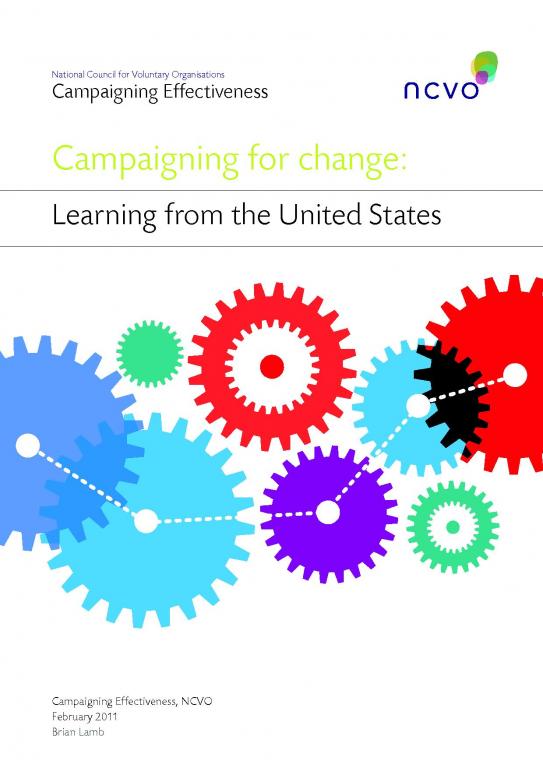 Hearing Brian talk through how campaigners could make use of Theory of Change was really helpful at bring the theory behind the tool found in various reports and guide that I’ve read to life.
Hearing Brian talk through how campaigners could make use of Theory of Change was really helpful at bring the theory behind the tool found in various reports and guide that I’ve read to life.
I came away from the time enthusiastic about if for the following reasons;
1. It get’s us to question our assumptions – One of the central features of the approach is to get you to name and provide evidence for the assumptions you’re making that lead you decide that the impact a certain input will have
I’ve long thought that we need to more to justify the decisions that we’re making between impact and outcome, and Theory of Change actively encourages you to do this, demanding you to list your assumptions and discuss why you’ve made them.
In doing so, I think its likely to force us to ask the question, what are the ‘most effective approaches I could use’ as opposed to ‘what existing tools do I already have that I need to use’.
2. It builds from impact up – The first thing that the approach asks you to do is to decide on the impact of your advocacy, this is defined as ‘the ultimate effect on the lives of those you’re seeking change for’.
Brian suggested that while this might sound like a straight forward question to answer, it often takes groups considerable time to come up with the answer to the question, but in doing so they help to reach common understanding of the change they’re seeking.
I know I’ve been in campaign planning sessions before where we’ve spent the majority of our time on agreeing a strategy to reach a policy solution; as opposed to asking what impact we want to that solution to have.
3. Provides clear building blocks – The approach is simple and logical. Working upwards from impact, to mapping 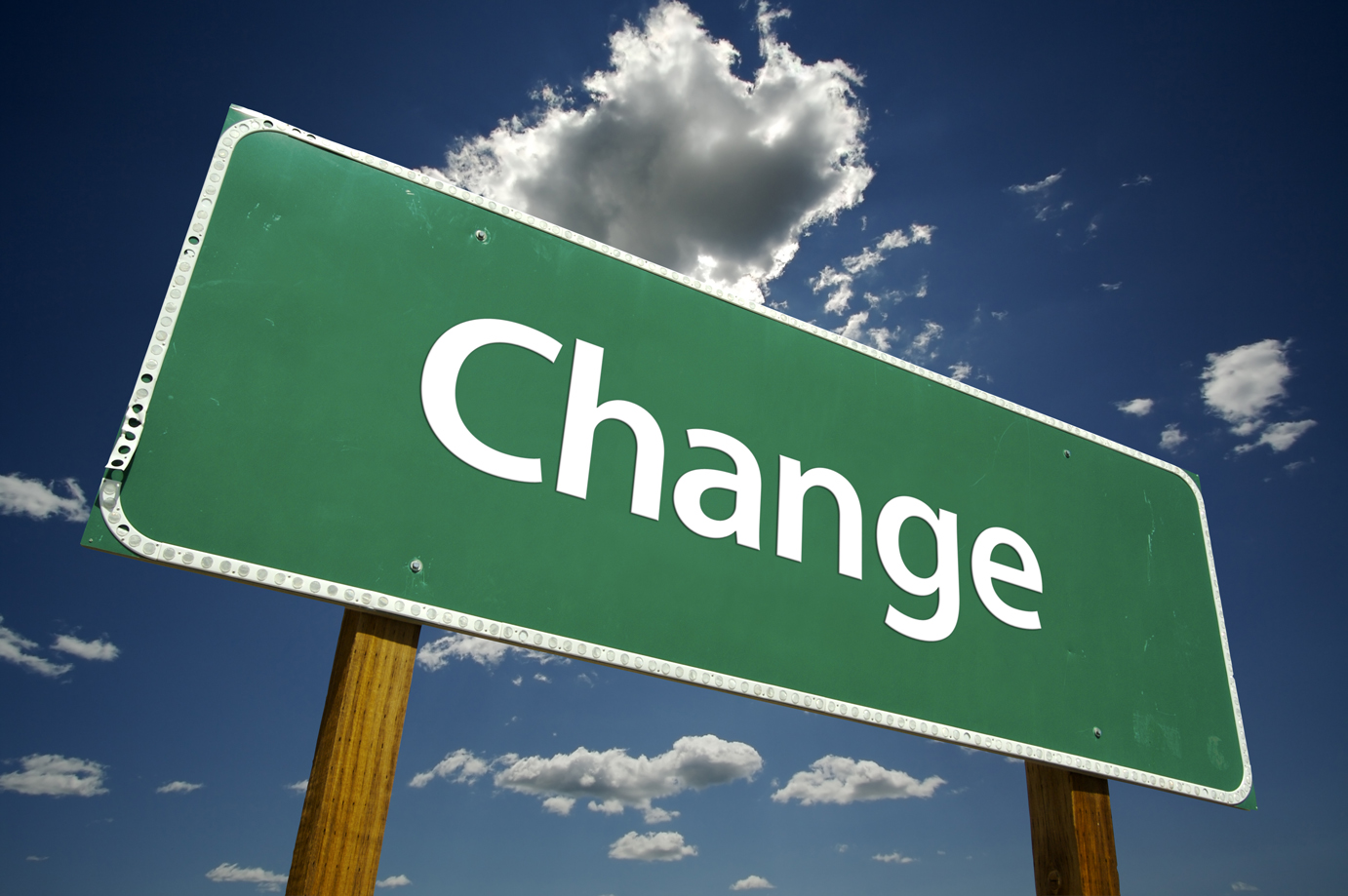 the strategies that will be needed to achieve this, to looking at the outcomes needed from activities to achieve this, to looking at the activities that will be required at the heart of the campaign.
the strategies that will be needed to achieve this, to looking at the outcomes needed from activities to achieve this, to looking at the activities that will be required at the heart of the campaign.
Also, because the built, there are lots of existing tools that already exist that can be used to help to guide our theories of change. In the session, Brian shared the work of the Harvard Family Research Project which has undertaken extensive research to identify a number of common approaches to policy goals and activities/tactics. Great source materials to help in campaign planning.
4. Gives us a common language – At the heart of the Theory of Change approach is the need for dialogues and discussion to reach conclusions. In the use of approaches like ‘so that’ chains (where you need to articulate a logical path between the steps you’re suggesting).
Throughout the process it provides opportunities for campaigners to clearly articulate their approach, but also invite others to test and question the logic. I can see how this is really helpful in unpacking the ‘mystery’ of our campaign planning to others, and helping to answer the hard questions
5. Helps to think about the best ways of allocating resources – You’re required to put all the outcomes and activities on the table in the process, rather than selecting those you think possible with the resources that you have.
Doing that means you can look afresh at how you might resource new approaches, or think creatively about new alliances to forge. The research also has some invaluable ‘checklists’ about what an organisation needs to have the capability to undertake effective advocacy.
My conclusion. That its worth investing the time into grappling with Theory of Change because it’s got huge applicability to campaigning and that its great to find someone to help work you through an example of the approach in person.
Five for Friday – 28th September
Five great articles on campaigning and social change that I’ve spotted over the last month.
1.Innovation a process, not a destination. A thoughtful look at innovation in social change from Stamford Social Innovation Review –
2. Great best practice article from the Mobilisation Lab – How Greenpeace Brasil built the movements biggest twitter following.
3. I didn’t put together a summer reading list this year, but thankfully Casper ter Kuile has.
4. How did the ODI thinktank build a winning online communications strategy – lots of useful and practical lessons for those wanting to get research noticed.
5. In Praise of Advocacy Amateurs – another challenging piece by Kirsy McNell over on Global Dashboard.
A creed for campaigners?
After rediscovering ‘ten positive, proactive steps to build a movement‘ by Michael Pertschuk last week, I’ve been sharing them with anyone who might be interested.
I find them challenging, inspiring and deeply practical. I’m journeying with them and trying to reflect on what I need to differently every day as a result. They’re wise words for anyone in the business of trying to achieve social change.
1. Remember where you come from, that you are part of something larger. Celebrate your origins and roots.
2. Listen to the insights and experience of people who are affected by the issues and participate in the efforts. They are the real experts – amplify their voices. Keep professional experts “on tap, not on top.”
3. Keep balance in your work and personal life. Work hard, yes. Meet responsibilities, yes. Make an extra effort, yes. But also add humor and rest. Avoid pessimism and martyrdom.
4. Recognise human frailty and accept it. Set the example by not holding yourself – or others – to rigid or impossible standards that drain the organisation’s energy.
5. Motivate others by sharing responsibility, paying attention to others, and encouraging those who make the extra effort. Give praise when it is merited.
6. Model behavior, or set a good example, by fostering cooperation, sharing information with others, and encouraging others’ leadership. Don’t dominate. Leave space for others to share their knowledge and skills.
7. Insist on a calm approach to solving problems. Set real deadlines. Avoid a crisis mentality.
8. Share credit generously within the organization, sector, and among allies.
9. Be equally civil to those who share your views or tactics, and those who do not. Agree to disagree and do so without personalising disagreements.
10. Recognize that there are incremental steps in the advocacy journey. Celebrate how far a group has come and what it means to the lives of people. New experiences – like meeting with a bureaucrat, politician, or editor – are as much a success as winning a favorable policy. They build confidence and empowerment that, in many ways, are the most profound and lasting changes. Savor them.
Are you signed up?
If you’re not already subscribed to these excellent updates on campaigning, I’d encourage you to do so now;
1 – NCVO Campaigning and Influence – a good monthly round-up of news, views and training opportunities.
2 – eCampaigning Forum – a busy list of over 100+ eCampaigners from around the world.
3 – Sheila McKechnie Foundation e-bulletin – a monthly newsletter promoting the work of the Foundation with useful links to the foundations blogs.
4 – MobLab Dispatches – excellent learning from the Greenpeace powered Mobilisation Lab every three weeks. A really good read.
5 – New Organizing Institute Tip of the Day – Simply brilliant.
Finally, if you’ve not already subscribed to this blog, why not have new posts delivered direct to you inbox by signing up using the box on the right!
8 things I learned at Netroots UK
I had a great time at Netroots UK yesterday, it was one of those conferences where various elements of my campaigning world came together, a conference full of NGO friends
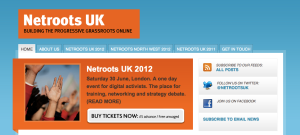 , Labour Party activists and lots of interesting people who I follow to help to collect ideas for this blog.
, Labour Party activists and lots of interesting people who I follow to help to collect ideas for this blog.
I’d strongly recommend that people go next year, and take some time to go back through the #NetrootsUK tag on twitter for a flavour of the discussion.
I came away with lots of reflections and a very long Evernote to go back and read, but here are 8 things that struck me immediately .
1 – We need to find self-replicating models for our campaigning. Paul Mason in a great overview of the UK campaigning sector described UK Uncut as a group that had changed the agenda.
Why? Because companies quickly became terrified of their branches being taken over, and that the model quickly grew from one action in London to many across the country, including involving many people who couldn’t immediately be identified as part of a radical movement.
Dani Paffard from UK Uncut on the same panel spoke on how they’d found the tactics they’d used to sustain media interest for much longer than they expected, and that it was a template that could easily be replicated.
2 – Training Matters– In the same seminar, Paul Mason identified on of the critical groups behind UK Uncut and the Occupy movement in the UK as those who’d attended and be trained at Climate Camp. They were he suggested ‘uber-activists + committed horizontalists who knew what to do’.
Adam Ramsay spoken of how many of those involved had been part of People and Planet as students and identified that as an important training ground, and suggested that while specific campaigns are like flowers that bloom from time to time, we need to invest in the roots that sustain them.
3 – We should be interested in who owns the internet – This wasn’t something that I’d spent much time thinking or indeed worrying about until last week, but hearing Sue Marsh from the Spartacus campaign speak about how they’d found blogs and chat rooms blocked during their campaigning on the impact of austerity on disabled people, you realise how important it is to make sure you have access to the tools you need to get out your message or organise your strategy.
4 – Parody Works – Jenny Ricks from Action Aid shared how they’d used parody to highlight the practices of Tesco and SAB Miller (makers of beer like Grolsch). Jenny suggested that parody has become much more popular because of the web, as it much easier to share and can be helpful in helping to shift a broader debate, in the case of Action Aid on tax dodging. She reminded us of the importance of ensuring significant research is available to back up the claims that are being made.
5 – That the fundamentals remain the same – In the closing session, we heard from Blue State Digital who used the examples of the It Gets Better and the Royal College of Nursing’s ‘Frontline First’ campaigns to remind us that campaigns:
- Need to make the most of moments.
- There is a thirst for personal connection even in digital campaigning.
- That relationships are long-term things to invest in.
- That online campaigning needs to drive offline activity.
6 – FoI is still a campaigning goldmine – Freedom of Information campaigner, Chris Coltrane reminded us of how easy at tool it is to use, and also that if you get told your request can’t be looked at because it costs too much money to always ask how they’ve made that calculation. My tips on using Freedom of Information are here.
7 – Presentation matters – The team from Who Funds You shared about their work looking at the transparency of UK think tanks, an important but potentially dry subject. However the front page of the site is a brilliant example of how to display the findings without hiding them in a press release. Karin Christiansen who’s behind the work also shared the following tips for anyone working on transparency issues suggested monitoring and ranking is the only way to get attention.
8 – We need to get out of our bubble – One of the final presenters, was Karina Brisby from the VOICE blogging project. She shared about how the project was set up to give voice to new people to share their perspectives on G20 and climate change summits, but also to ensure that the issues were communicated to those ‘outside the bubble’ by inviting bloggers to get involved who had diverse and different audiences.
Why reporting back matters….
A couple of timely reminders about why feeding back on the success (or otherwise) of our campaigns is so important.
Firstly, the findings of a substantive piece of research on ‘Understanding public attitudes to aid and development’ from the thinktanks ODI and IPPR.
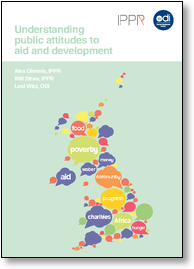 As the Campaigns Totals work that I’ve carried out over the last few years shows, the development sector in the UK has some of the most active campaigning departments generated hundreds of thousands of actions every year. In light of that, the findings from a number of focus groups across the country on what people thought about development and aid are important.
As the Campaigns Totals work that I’ve carried out over the last few years shows, the development sector in the UK has some of the most active campaigning departments generated hundreds of thousands of actions every year. In light of that, the findings from a number of focus groups across the country on what people thought about development and aid are important.
While the report is reflecting on all the communications that have come from the sector of which campaigning is only part, the researchers found a new trend that highlights the importance of sharing stories of success, including in our campaigning is as important in helping to demonstrate that we are making a difference, even if the direct causality is hard to show.
But something polling and surveys have not highlighted to date is the extent to which some of the communications and fundraising images NGOs and governments use may have contributed to public scepticism – the repeated use of images that show people living in desperate need has created an impression that very little has changed over the past few decades.
The researchers goes onto suggest that;
The dissatisfaction expressed with the more simple narratives often communicated today – and the relatively undeveloped understanding they have fostered – should provide food for thought for policymakers and those engaged in advocacy on these issues
While the challenges from the report need to be taken on by more than just those involved in advocacy campaigning within the development sector, I think it presents a clear challenge for any sector of the danger of repeatedly asking people to take action without actively feeding back on the impact that their actions have had can have.
Secondly, was anoter great email from the team at SumOfUs.org.
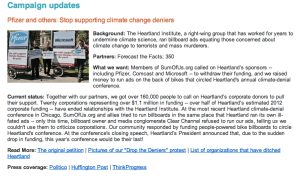 Sadly I can’t find a copy of the email on the web anywhere, but the message which was entitled ‘OFFICIAL REPORT-BACK: April-June‘ was an excellent example, taking me through the 6 or so key campaigns that SumOfUs.org had been behind over the last few months and summarising the impact that the movement has had.
Sadly I can’t find a copy of the email on the web anywhere, but the message which was entitled ‘OFFICIAL REPORT-BACK: April-June‘ was an excellent example, taking me through the 6 or so key campaigns that SumOfUs.org had been behind over the last few months and summarising the impact that the movement has had.
It was an impressive and empowering read, honest as to the reasons why some of the campaigns hadn’t succeeded but also clear about the difference action had made. I’ve pasted the first few paragraphs below;
Our tiny team (just 5 people!) can’t take on these corporations on our own. But when the whole SumOfUs.org community — over 680,000 conscientious consumers around the world — comes together, corporations sit up and take notice, and magical things can happen.
All told, we’ve taken an astounding 2,655,793 actions since our inception just six months ago. And lately we’ve won some big campaigns — like driving out more than half of all corporate funding for the climate-denying Heartland Institute.
So, read on below and see more of what we’ve accomplished together!
It’s a great example of how to do feedback well, and given the findings of the IPPR/ODI report a timely reminder of the importance of doing it.
Getting the most from your time as a volunteer
School’s out for the summer for university students, and some will be heading into volunteering roles and internships with campaigning organisations across the UK and beyond.
Doing a number of short-term internships or volunteering roles is one of the most common routes for getting a permanent job in campaigning, it’s also a good way of finding out that this perhaps isn’t the career for you.
 I’ve been fortunate to have hosted lots of great volunteers in the organisation I work for over the years, and as such come up with my 8 top tips for getting the most out of your time as a volunteer with a campaigns team.
I’ve been fortunate to have hosted lots of great volunteers in the organisation I work for over the years, and as such come up with my 8 top tips for getting the most out of your time as a volunteer with a campaigns team.
1. Be honest – Find out why you’re being asked to do the tasks your being asked to do. Some of them won’t be glamorous, but there should be a good reason for everything you’re being asked to do. Asking lots of questions is one of the best ways of understanding how different tactics and approaches come together to make a campaign.
2. Be clear – Make sure you get the time you need at the start of your time with an organisation to understand what they want you to achieve from your time, and for you to explain what you hope to achieve. If there are certain areas that you’re interested in finding out about more, ask at the start as it’s often possible to arrange something. Be clear what your objectives from the time you’ll be volunteering are.
3. Be in the room – I always try to make an effort to invite volunteers and interns to different meetings that are going on. Some of them are directly related to a project they may be involved with, but often I see them as a good opportunity to learn. If you’re invited to these meeting, GO. You’ll almost certainly get an insight that you wouldn’t have done if you’d just stayed at your desk.
4. Be Bold – It can be intimidating being a volunteer or intern, but be bold and if you think that somethings been overlooked in a meeting or if you have a good idea to contribute speak up. Chances are those involved will welcome the new insight that you’re able to bring.
5. Be a networker – Make time to try to get to know others around the organisation, approach people from different teams and ask if you might be able to meet them for lunch to find out more about their work. They’ll probably be happy to share more about it, go with some good question and you’ll come back an hour later with a better picture of how the work you’re doing links with the work of the rest of the organisation.
6. Be a learner – Ask those you’re working with for suggestions of good books, websites, reports and resources. It’s a good way to learn more about the campaigning craft and find out how others do it. Many organisations also have lunchtime sessions with internal/external speakers, go along to these as well.
7. Be cheerful – it sounds so obvious, but bring energy into the office you work in. There is little worse that a volunteer who appears uninterested. Get involved in making the tea or partaking in whatever other office routines you encounter.
8. Give feedback – At the end of your time let those you’ve been working with know what you’ve enjoyed doing, and what you found could do with some more consideration. You’ll be helping out future volunteers/interns.
What advice would you give to those coming to volunteer or intern for you this summer?
Update – The team at Bright One have also come up with an excellent list of Do’s and Don’ts for an intern.
